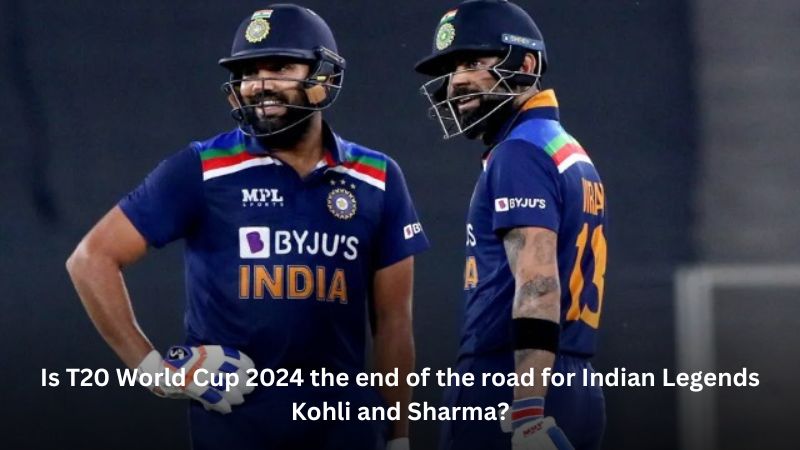
Sachin Tendulkar’s name is synonymous with cricket excellence. Over a career spanning 24 years, Tendulkar amassed numerous records, becoming a national hero and a global icon. The 2011 World Cup held special significance as it was Tendulkar’s sixth and final attempt to win the coveted trophy. At 39, he was the elder statesman of the team, and the entire squad was determined to win it for him. The emotional high point came when the team carried him on their shoulders around the Wankhede Stadium, with Virat Kohli famously remarking, “He has carried our batting on his shoulders for so long, it is time we carried him on our shoulders.”
Tendulkar’s Career Overview
Tendulkar debuted for India in 1989 at the tender age of 16. Over the next two decades, he would go on to break nearly every batting record, becoming the highest run-scorer in both Test and One Day International (ODI) cricket. His career highlights include:
- Most runs in Tests and ODIs
- First player to score a double century in ODIs
- Most centuries in international cricket
- Only player to have 100 international centuries
The Significance of the 2011 World Cup Win
The 2011 World Cup victory was not just about the trophy; it was about fulfilling a nation’s dream and honoring its greatest cricketing legend. The journey to the final was filled with memorable moments, from Yuvraj Singh’s all-round heroics to Dhoni’s match-winning six in the final. For Tendulkar, it was the culmination of years of dedication and hard work, finally achieving what he had always dreamed of.
Tendulkar’s Final Years in International Cricket
After the 2011 World Cup, Tendulkar continued to play for another two years, eventually retiring in 2013. His farewell series against the West Indies saw emotional tributes from fans and fellow cricketers alike. Tendulkar’s retirement marked the end of an era, but his legacy continued to inspire future generations.
Virat Kohli: The Heir Apparent
Virat Kohli emerged as Tendulkar’s natural successor, bringing a new level of aggression and intensity to Indian cricket. Known for his remarkable consistency and fitness, Kohli quickly rose through the ranks to become one of the world’s leading batsmen.
Kohli’s Rise in Indian Cricket
Kohli made his debut for India in 2008 and soon became a mainstay in the team. His early career was marked by a string of impressive performances, and he quickly earned a reputation as a reliable batsman. By 2011, he was already an integral part of the Indian squad, playing a crucial role in the World Cup victory.
Achievements and Milestones
Kohli’s career has been nothing short of extraordinary. Some of his notable achievements include:
- Fastest player to reach 8,000, 9,000, 10,000, 11,000, and 12,000 runs in ODIs
- Most centuries in successful run-chases in ODIs
- Leading India to its first-ever Test series win in Australia (2018-19)
- Consistently ranked among the top batsmen in the world across all formats
Comparison with Tendulkar’s Career
While comparisons between Tendulkar and Kohli are inevitable, each has carved out a unique legacy. Tendulkar’s career was marked by his classical technique and consistency over two decades. Kohli, on the other hand, has brought a modern, aggressive approach, with an emphasis on fitness and chasing big totals. Both have set high standards, inspiring countless young cricketers.
The 2011 World Cup: A Turning Point
The 2011 World Cup was a watershed moment for Indian cricket. It not only marked the end of Tendulkar’s quest for a World Cup but also heralded the rise of a new generation of cricketers.
Key Moments of the Tournament
India’s journey to the 2011 World Cup title was filled with memorable moments:
- Tendulkar’s masterful innings against England and South Africa
- Yuvraj Singh’s all-round performances, earning him the Player of the Tournament award
- MS Dhoni’s captaincy and his iconic six to win the final
- Contributions from young players like Kohli, who set the stage for the future
The Team’s Performance
India’s balanced team performance was a key factor in their success. The blend of experienced players like Tendulkar, Sehwag, and Zaheer Khan, combined with the youthful exuberance of Kohli and Raina, created a formidable unit. The team’s resilience and ability to perform under pressure were crucial in their journey to the title.
Post-World Cup Changes in Indian Cricket
The 2011 World Cup victory led to significant changes in Indian cricket. The triumph brought about a renewed focus on fitness and fielding, aspects that became integral under the leadership of players like Kohli. The Board of Control for Cricket in India (BCCI) also began investing more in grassroots development, aiming to nurture the next generation of talent.
Kohli and Sharma: The Twilight Years
As Virat Kohli and Rohit Sharma approach the latter stages of their careers, Indian cricket stands at a crossroads. Both players have been instrumental in India’s successes over the past decade, but their eventual retirement will leave a significant void.
Kohli’s Current Form and Fitness
Kohli’s dedication to fitness has been a hallmark of his career. Even at 36, he remains one of the fittest players in world cricket. However, maintaining peak performance in international cricket is challenging, and the next T20 World Cup in 2026 and the 50-over version in 2027 may be out of reach for him.
Sharma’s Contributions and Leadership
Rohit Sharma, known for his explosive batting and calm demeanor, has been a pivotal figure in Indian cricket. As captain, he has led the team with distinction, especially in limited-overs cricket. His contributions with the bat and his leadership skills will be missed once he steps down.
Prospects for Future Participation in Major Tournaments
The likelihood of Kohli and Sharma participating in future World Cups seems slim. However, their experience and guidance will be invaluable in mentoring the next generation. As the team transitions, their roles might evolve from players to mentors, helping shape the future of Indian cricket.
The Absence of a Rallying Cry
Unlike the 2011 World Cup, where the slogan “Let’s do it for Sachin” galvanized the team, there has been no similar rallying cry for Kohli or Sharma.
No “Let’s do it for Kohli” or “Let’s do it for Rohit” Campaigns
The absence of a public campaign or slogan for Kohli or Sharma is noticeable. This could be due to several reasons, including the team’s focus on collective goals rather than individual milestones.
Possible Reasons for This Cultural Shift
The cultural shift in Indian cricket could be attributed to the modern team’s emphasis on unity and teamwork. The younger generation of cricketers prioritizes team success over individual glory, reflecting a broader change in the team’s ethos.
The Impact on Team Motivation and Performance
While individual milestones remain important, the focus on collective achievements has positively impacted team dynamics. The players are more motivated to perform as a unit, which has led to a more cohesive and resilient team.
Rahul Dravid: The Last Assignment
Rahul Dravid, the current head coach of the Indian cricket team, is nearing the end of his tenure. Known for his calm demeanor and strategic acumen, Dravid’s contributions have been significant.
Dravid’s Role as Coach
Dravid took over as head coach in 2021, bringing a wealth of experience and a meticulous approach to the role. His emphasis on nurturing young talent and building a strong team culture has been evident in his strategies.
Contributions and Strategies
Under Dravid’s guidance, India has seen the emergence of several young talents. His focus on discipline, technique, and mental toughness has helped the team navigate challenging phases. Dravid’s ability to instill confidence and resilience in players has been a key factor in India’s recent successes.
The over-35s in the current squad in the West Indies include Ravindra Jadeja, while Suryakumar Yadav, the top batter in the format approaches 34.
Age ought not to matter, form and fitness should decide. Yet, T20 is a tricky format. Experience might actually work against a player, where strategy and tactics move at great pace and yesterday’s philosophies no longer apply.
T20 was a different beast when Kohli and Sharma first began to make their mark on it.
That they have been able to keep pace with the likes of Suryakumar and Jaiswal (No 7 in the world) is a tribute to their adaptability. It is possible that one or both of them might call it quits after the current World Cup. If India win, they can’t go any higher and they would have moved aside after a triumph. If they lose, there will be pressure on them to make way. Sports can be cruel.
When India lost the 50-over World Cup in the final to Australia last year, the country went into mourning. The players were heartbroken, none more palpably than Kohli and Sharma who had both had a good tournament as India went into the final unbeaten. And then they fluffed it. Neither would get a ride on teammate’s shoulders. Each knew the chance might never come again.


